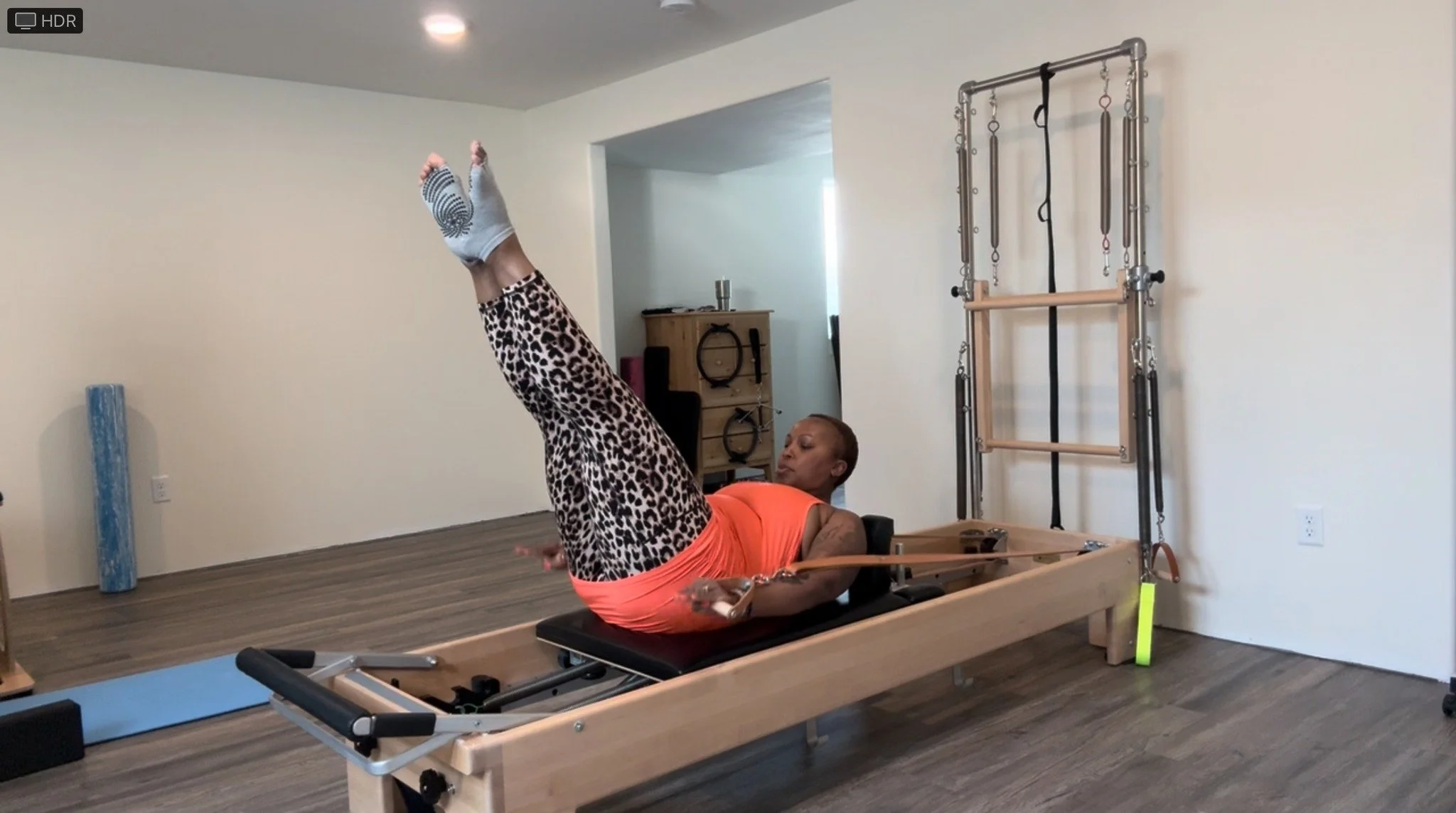FAQ Time: What You Should Know Before Pilates Teacher Training
I’ll be honest with you: Being a Pilates teacher was not on my life’s bingo card. I stumbled into this instructor life like most movement coaches: as a dedicated student.
I’d dabbled in Pilates during the height of its’ early 2000s craze, working out to my Mari Winsor DVD set in between TaeBo sessions and power walks. Back then, I hated cardio (I’m lying - I still hate cardio) and my yoga practice was my mode of relaxation - not sweat. Pilates was a practice that brought both strength and stretch to my body. Picking it up again during the pandemic of 2020 with my college bud Rachel Piper of Size Diverse Pilates as my coach took the edge off during a chaotic time.
Me with my Pilates mentor (credit: Rachel Piper/Size Diverse Pilates)
Five years - and many rounds of the Hundred later - I’m a certified instructor. It’s expanded my practice and my community. I get to connect with fellow newbie instructors like Heather Martin of Etain Pilates. If you missed our episode of #GetGrounded Saturday last weekend, we chatted about our experiences with Pilates teacher training. Below are some topics we didn’t have time to answer during the live - a cute little FAQ, if you will:
FAQ #1: Do I have to be good at Pilates to enter teacher training?
Kellee: While having some experience with the practice is recommended, you in no way have to be an expert. In fact - newsflash! - there are no Pilates experts. We are all practicing, whether we’ve been doing Pilates for decades or walking into our first studio class. The only things you need to be ‘good at’ to begin teacher training is listening, falling down rabbit holes about the Elders, and connecting with your body. If that last one is tricky for you, trust me: you will learn that connecting very deeply in teacher training.
The Reformer & I (credit: Rachel Piper/Size Diverse Pilates)
FAQ #2: I’ve been to classes and I love using the reformer, but should I start with mat training first?
Heather: I think it is important to do mat training and reformer training, preferably in that order. Ultimately, Pilates is a system of exercises. The mat exercises came first and the rest came later to support the mat work. In short, many of the equipment-based exercises lead back to the mat. If you do reformer training first, you may miss a lot of context if you are not familiar with the mat work first.
FAQ #3: Besides the exercises, what was most fun part of Pilates to learn about?
Kellee: Fun fact about me - teacher training was the first time I ever studied anatomy. I stealthily avoided those classes throughout high school and college, so I was anxious when I knew it would be a part of the teacher training curriculum. Fortunately, Rachel’s curriculum guided me through the basics equipped with colorful manuals, movement demonstrations, and (the BEST part!) tracing and coloring muscles and joints.
FAQ #4: For reformer training, how do I book studio space to practice teach if I don’t have a reformer at home?
Heather: I think this is a very important question to consider; I had to ask as well. I live in a small one bedroom apartment with neither the space nor the budget for a reformer. Fortunately, my Pilates studio hosts my teacher training modules as well as a student teacher package and a la carte services like studio rental options for observation, self practice, and practice teaching.
If you are training with a studio, be sure to ask about any similar services and costs. While some of the exercises can be replicated at home with a few props, it won’t be quite the same experience doing or teaching them as on a reformer.
Did Heather and I miss anything? Grab time with either of us for a FREE consult by filling out the contact form below, putting FAQ in the Subject Line. We’d love to hear from you, future Pilates teachers!




